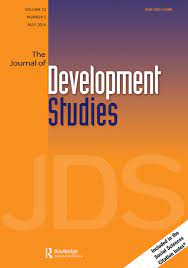Publications
Main publications by year
2022
-
 Heterogeneous Effects of Forced Migration on the Female Labor Market: The Venezuelan Exodus in ColombiaJulian Pedrazzi, and Leonardo Peñaloza-PachecoThe Journal of Development Studies 2022
Heterogeneous Effects of Forced Migration on the Female Labor Market: The Venezuelan Exodus in ColombiaJulian Pedrazzi, and Leonardo Peñaloza-PachecoThe Journal of Development Studies 2022In this paper, we analyze the impact of Venezuelan migration on the female labor market in Colombia. Following the economic crisis in Venezuela, more than 1.5 million Venezuelans arrived in Colombia in the period 2016–2019. Using an instrumental variables approach, we find that the sudden influx of millions of migrants reduced the labor force participation of less-skilled native women due to a disproportionate increase of competition in economic activities in which they were more concentrated. On the other hand, migration positively affected the labor force participation for high-skilled women with children. When testing the underlying mechanisms of this latter result, we find a reduction in the time spent on childcare and an increase in the probability of hiring domestic service, explained by a decrease in the cost of this service due to the Venezuelan exodus.
2023
-
 Discrimination against gay and transgender people in Latin America: a correspondence study in the rental housing marketNicolás Abbate, Marı́a Inés Berniell, Joaquı́n Coleff, and 5 more authorsLabour Economics 2023
Discrimination against gay and transgender people in Latin America: a correspondence study in the rental housing marketNicolás Abbate, Marı́a Inés Berniell, Joaquı́n Coleff, and 5 more authorsLabour Economics 2023We assess the extent of discrimination against gay and transgender individuals in the rental housing markets of four Latin American countries. We conducted a large-scale field experiment building on the correspondence study methodology to examine interactions between property managers and fictitious couples engaged in searches on a major online rental housing platform. We find no evidence of discrimination against gay male couples, but we do find strong discrimination against heterosexual couples with a transgender woman partner (trans couples). Relative to heterosexual couples, trans couples receive 19% fewer responses, 27% fewer positive responses, and 23% fewer invitations to showings. We also assess whether the evidence is consistent with taste-based discrimination or statistical discrimination models by comparing response rates when couples signal being professionals with stable jobs (quality-job signal). While we find no significant effect of the signal for heterosexual or gay male couples, trans couples benefit from providing a strong labor market signal. Their call-back, positive-response, and invitation rates increase by 25%, 36% and 29%, respectively. These results suggest that discrimination against trans couples is consistent with statistical discrimination. Moreover, we find no evidence of heterosexual couples being favored over gay male couples, nor evidence of statistical discrimination for gay male or heterosexual couples.
-
 The last hurdle?: unyielding motherhood effects in the context of declining gender inequality in Latin AmericaMariana Marchionni, and Julián Pierino PedrazziDocumentos de Trabajo del CEDLAS 2023
The last hurdle?: unyielding motherhood effects in the context of declining gender inequality in Latin AmericaMariana Marchionni, and Julián Pierino PedrazziDocumentos de Trabajo del CEDLAS 2023We assess whether motherhood could be the last hurdle to achieving gender equality in developing countries by exploring the link between motherhood and the overall gender gap in the labor market for 14 Latin American countries over the last two decades. Using pseudopanels built from harmonized household surveys and an event study approach around the birth of the first child, we find that the arrival of the first child leads to a sharp and persistent 35% decline in mothers’ earnings. This result is explained by a reduction in employment and a prompting shift towards occupations that favor more flexible work arrangements, including part-time and informal jobs. These effects are pervasive across countries and population groups. Furthermore, using an extended version of the Oaxaca-Blinder decomposition, we identify motherhood as the primary source of income inequality between men and women. Motherhood explains 42% of the remaining gender gap and has progressively gained relative importance over the last two decades while other contributing factors, such as education and its associated returns, have shown a waning impact. Moreover, we find no clear crosscountry association between the motherhood-related gap and per capita GDP or gender norms, while the contribution of other factors to the gender gap in earnings diminishes with higher per capita GDP and more gender-egalitarian social norms. This suggests that gender gaps stemming from the motherhood effect exhibit greater rigidity than other drivers of gender inequality.